Aerial views of industrial feedlots illuminate their toxic impact on the land.
Photographs by Mishka Henner
Tascosa Feed Yard, Bushland Texas. (Photo: Mishka Henner)
Once upon a time, pigs and cows grazed on the same land where crops grew, moving from field to field with each new season. The livestock feasted on the cover crops; the soil, on the livestock’s enriching manure. Then, as demand for meat skyrocketed, a new model emerged: cramming thousands of animals onto muddy or dusty square miles called feedlots, where they are fattened mostly on bushel upon bushel of cheap corn. The high concentration of livestock and its waste releases excessive amounts of carbon dioxide, methane, and bacteria into the water and air, but one of the biggest threats comes from elevated levels of ammonia, which can encourage algal blooms and weedy invaders in nearby lakes and streams. The stench — ammonia is the same stuff in smelling salts — could knock a cowboy off his horse. Rust Belt cities downwind of feedlots are breathing this ammonia, along with particulates that can cause respiratory and heart problems. As for the cows, it would be anthropomorphizing to assume that they abhor standing haunch-to-haunch in each other’s manure all day, passing antibiotic-resistant infections to each other while subsisting on a diet they were never meant to eat. But it’s a distinct possibility. In the photographs that follow, photographer Mishka Henner has stitched together satellite imagery to reveal the insidious effects of feedlot farming.
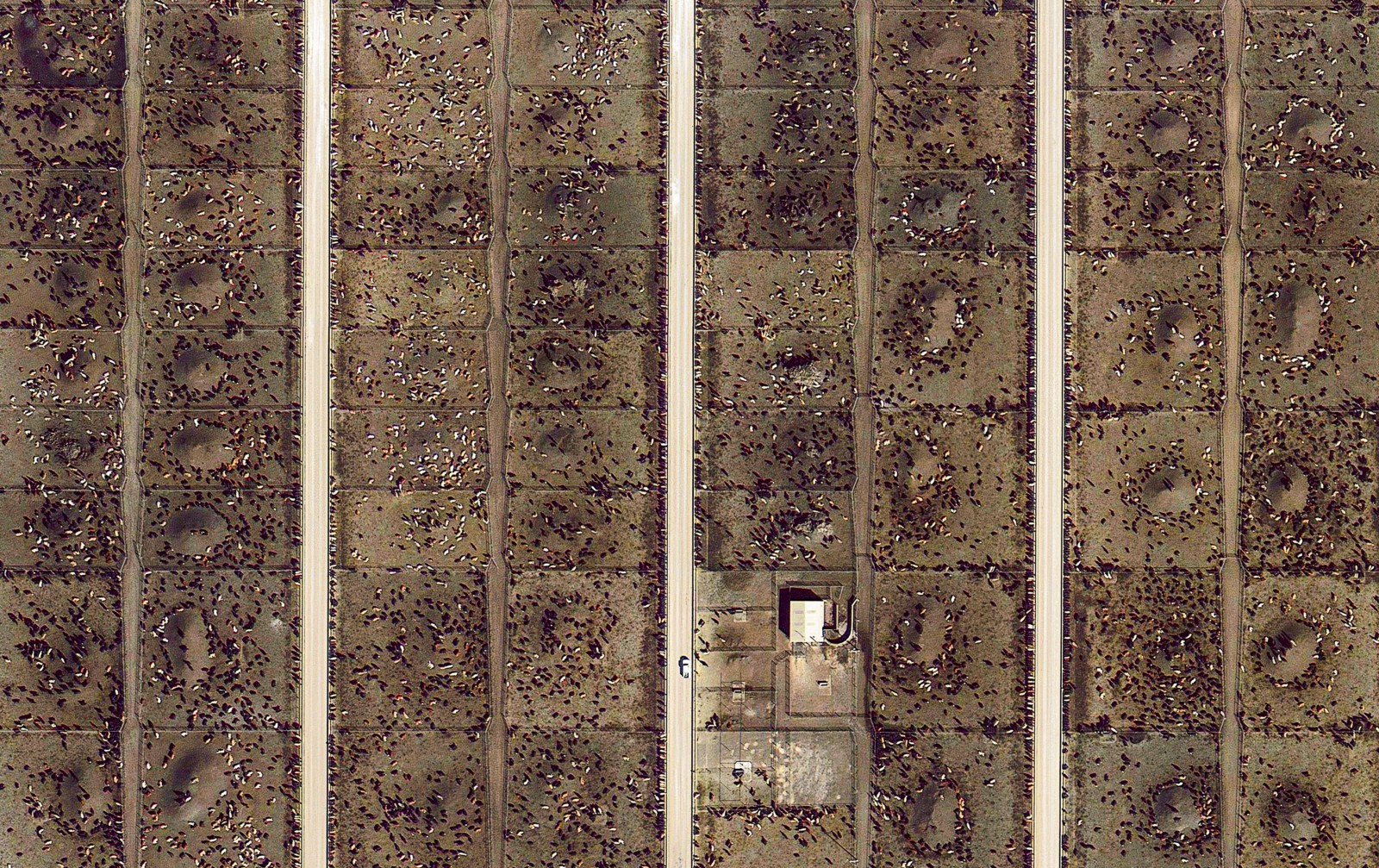
Friona Feed Yard, Parmer County, Texas. (Photo: Mishka Henner)

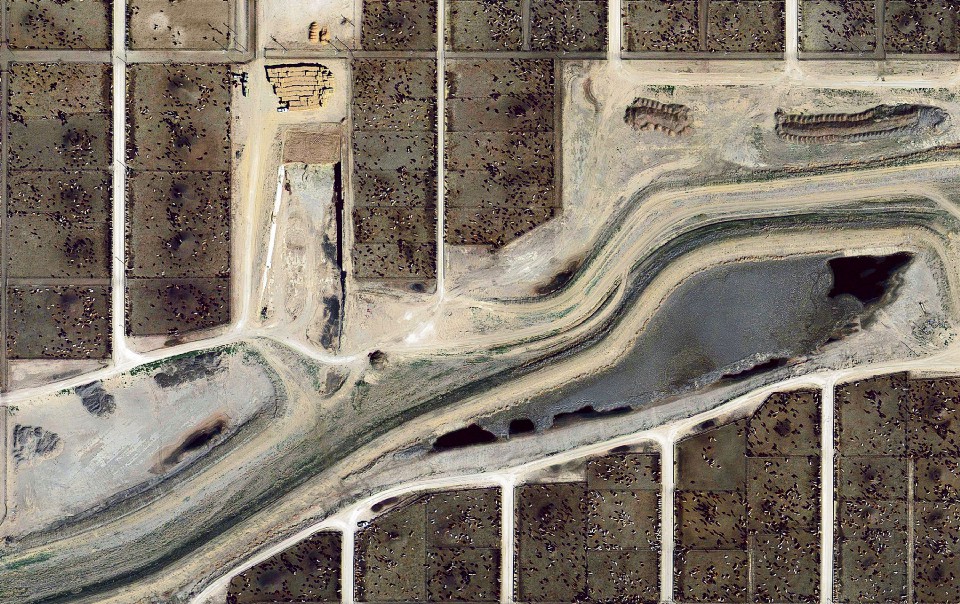
Left: Centerfire Feed Yard, Ulysses, Kansas. (Photo: Mishka Henner) | Right: Friona Feed Yard, Parmer County, Texas. (Photo: Mishka Henner)
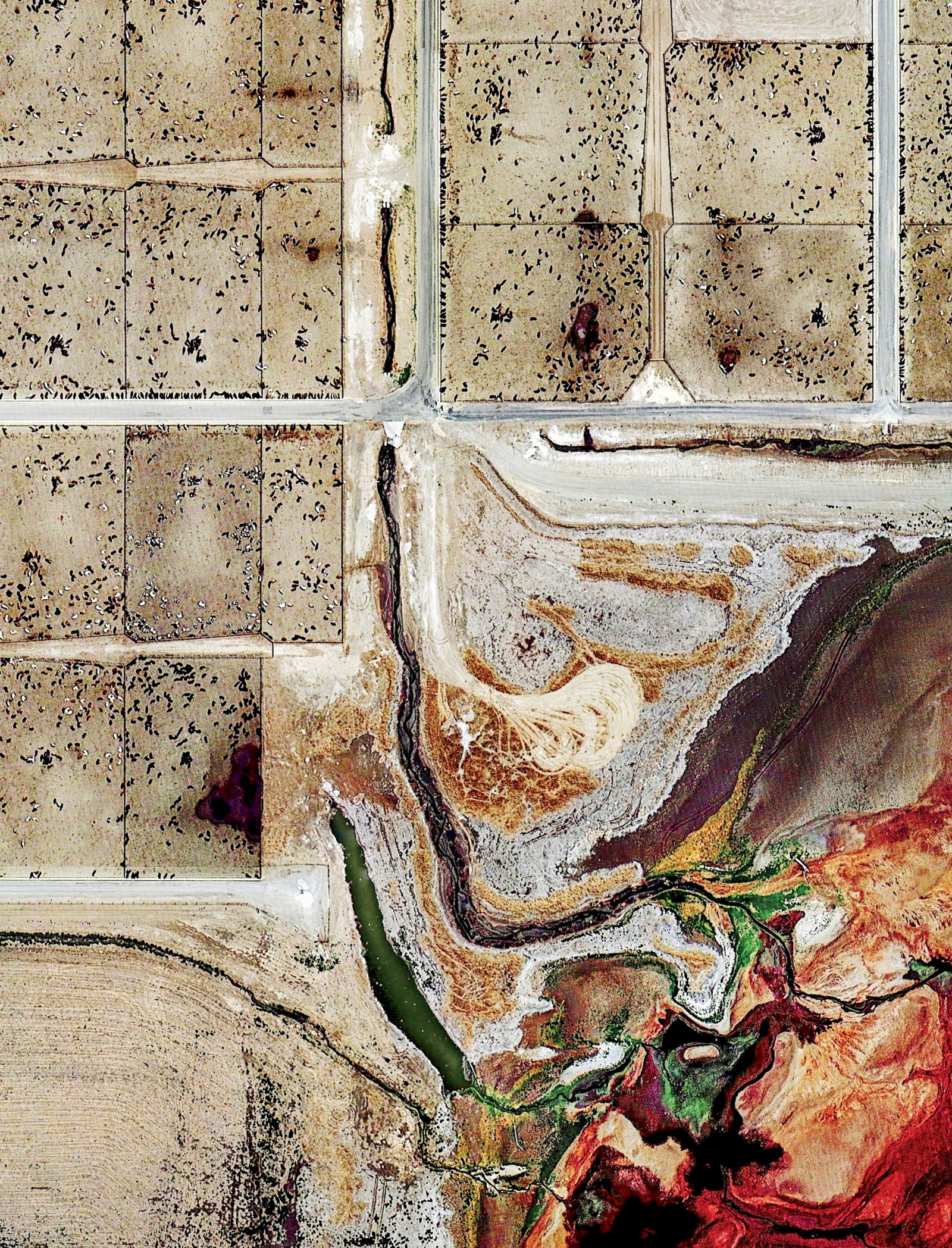
Coronado Feeders, Dalhart, Texas. (Photo: Mishka Henner)
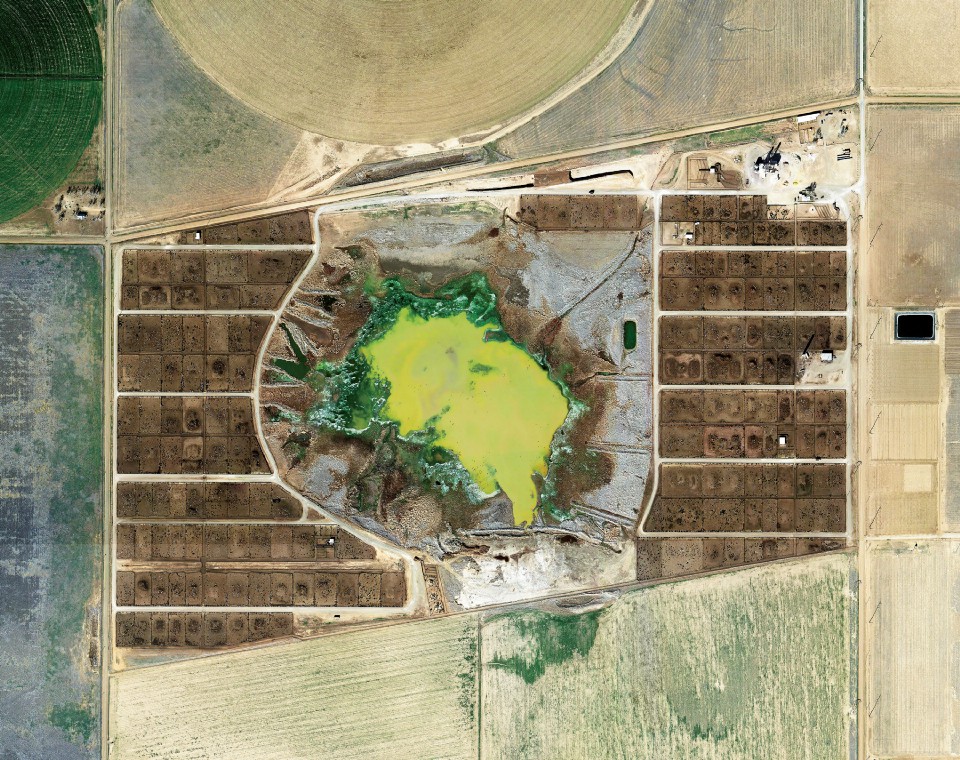
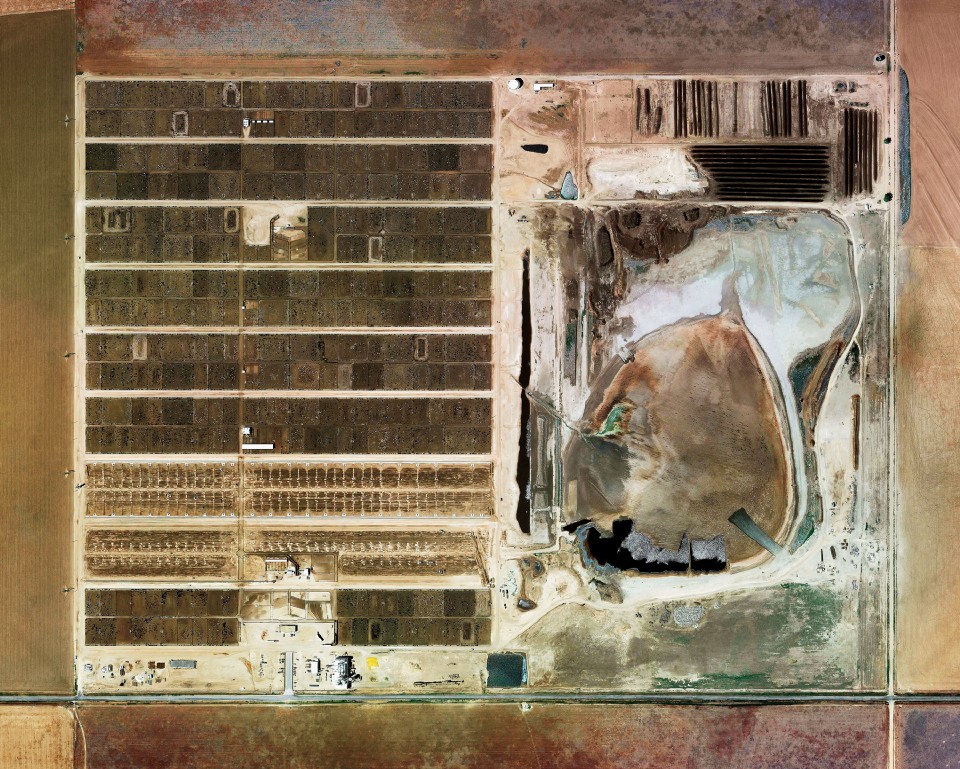
Left: Tascosa Feed Yard, Bushland, Texas. (Photo: Mishka Henner) | Right: Wrangler Feed Yard, Tulia, Texas. (Photo: Mishka Henner)





